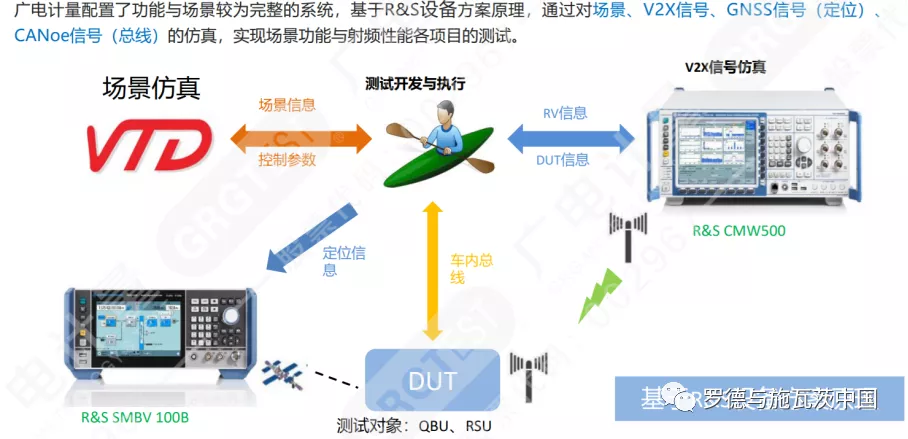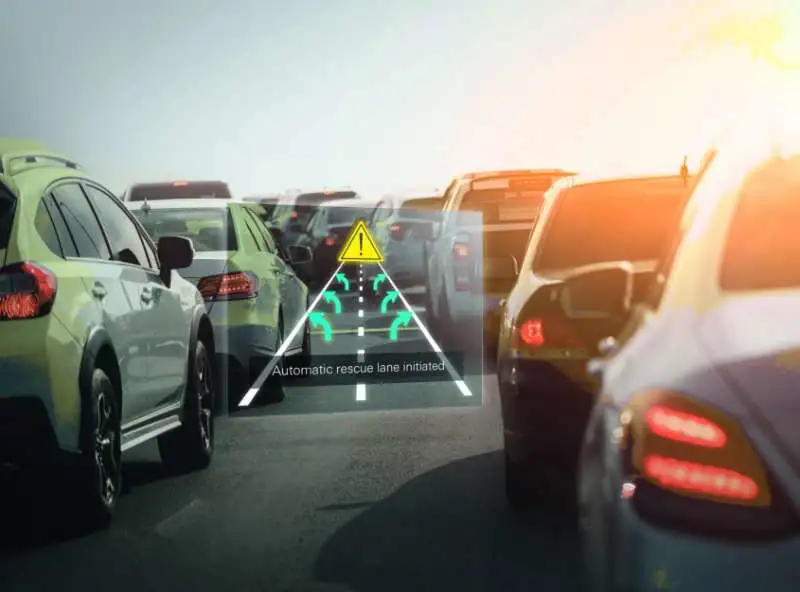Connected Vehicles (CV) is an important technology trend for the future development of the automotive industry. It is also a critical technical means for vehicle-road coordination, improving traffic efficiency and optimizing passenger experience. China’s proposed Cellular Vehicle-to-Everything (C-V2X) is a technology based on LTE R14 evolution and has become the world’s mainstream technology for connected vehicles.
To validate the performance of connected vehicles and ensure the technology’s implementation, automakers need to conduct testing from several aspects. First, it is necessary to conduct radio frequency testing on the On-Board Unit (OBU) module to ensure its hardware performance, including transmitter, receiver, and demodulation performance testing. This can mainly refer to the Automotive Industry Standard and National Standard of the People’s Republic of China “Technical Requirements for LTE-V2X Direct Communication-based On-Board Information Interactive System.” Secondly, to ensure the interoperability of C-V2X modules from different manufacturers, network layer, message layer, and security layer protocol consistency testing is required. This can refer to the standards “Technical Requirements for Network Layer Technology of LTE-Based Connected Vehicle Technology” and “Technical Requirements for Message Layer Technology of LTE-Based Connected Vehicle Technology.” Finally, automakers need to develop C-V2X autonomous driving algorithms for different scenarios and conduct field tests to verify the algorithm’s performance. However, field tests are often complex and not reproducible, and lacked the ability to build complex test scenarios.
To bridge the gap between software verification and field testing, Rohde & Schwarz (R&S) and CTTL-GIT, a subsidiary of CICT, jointly offer the C-V2X traffic scenario hardware in-the-loop testing system. It provides product functional verification services to automakers/suppliers at the product design stage and enables scenario simulation verification services to automotive companies. It can meet the standard required scenario verification needs, as well as customized scenario verification needs by automakers and can ensure the safety of C-V2X products.
The system’s architecture diagram is as follows:

eCall is a manual or automatic emergency call to the 112 call center with the least minimum data set (MSD) information, including vehicle location information, time information, number of passengers, Vehicle Identifier Number (VIN), and other relevant auxiliary information when an accident happens. ERA-GLONASS is a system in Russia providing similar in-car emergency call services like eCall. In the EU and Customs Union of Russia-led States, the emergency rescue system is mandatory for vehicles to circulate in the local market.In April 2018, the European Union required eCall functionality on all new cars entering the market, and additional certification requirements were added for system-level products and whole vehicles exported to the European market. The primary regulations followed were Regulation (EU) 2017/79 and CEN EN 16454 standard. In customs union countries, according to the Customs Union Technical Regulations “TP TC 018/2011” revision, all new and used vehicles circulating in customs union countries must be equipped with ERA-GLONASS system/device as of January 1, 2017.
In the Middle East, the UAE requires all new vehicle models produced in 2021 and sold in the United Arab Emirates to be equipped with eCall systems, following the UAE.S 5019:2018 standard. The requirements for the UAE eCall system are based on the UAE.S 5019:2018 standard and involve new light vehicles with up to 9 seats and weighing less than 3.5 tonnes from 2021 onwards. In May 2020, Saudi Arabia’s national standardization organization SASO published a draft of the “Emergency Call System” technical requirements for motor vehicles. The document stipulates that all new light vehicle models exported to Saudi Arabia must be equipped with an eCall system from 2021 onwards, and all light vehicles should be equipped with an eCall system from 2023 onwards, following the SASO 2944:2020 regulation.
To provide testing services that meet the relevant eCall regulations for international host manufacturers entering the market, Guandian Metrology adopted R&S’s eCall testing system for whole vehicles or components.
Xiao Duliang, Senior Technical Expert of Guandian Metrology, stated, “China’s intelligent networked automotive industry is developing very rapidly and requires innovative testing methods and certification programs. Guandian Metrology is pleased to work with R&S to provide leading vehicle-to-network and eCall testing solutions to the automotive industry in a timely manner, promoting the development of intelligent networked vehicles. R&S’s solution can simultaneously cover the requirements of vehicle-to-network C-V2X and eCall certification system, expanding our business scope.”
This article is a translation by ChatGPT of a Chinese report from 42HOW. If you have any questions about it, please email bd@42how.com.
